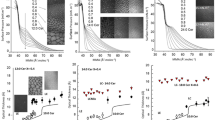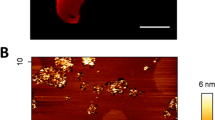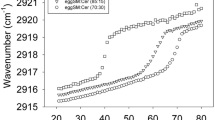Abstract
Ceramides, the simplest kind of two-chained sphingolipids, contain a single hydroxyl group in position 1 of the sphingoid base. Sphingomyelins further contain a phosphocholine group at the OH of position 1 of ceramide. Ceramides and sphingomyelins show a variety of species depending on the fatty acyl chain length, hydroxylation, and unsaturation. Because of the relatively high transition temperature of sphingomyelin compared to lecithin and, particularly, of ceramides with 16:0–18:0 saturated chains, a widespread idea on their functional importance refers to formation of rather solid domains enriched in sphingomyelin and ceramide. Frequently, and especially in the cell biology field, these are generally (and erroneously) assumed to occur irrespective on the type of N-acyl chain in these lipids. This is because most studies indicating such condensed ordered domains employed sphingolipids with acyl chains with 16 carbons while scarce attention has been focused on the influence of the N-acyl chain on their surface properties. However, abundant evidence has shown that variations of the N-acyl chain length in ceramides and sphingomyelins markedly affect their phase state, interfacial elasticity, surface topography, electrostatics and miscibility and that, even the usually conceived “condensed” sphingolipids and many of their mixtures, may exhibit liquid-like expanded states. This review is a summarized overview of our work and of related others on some facts regarding membranes composed of single molecular species of ceramide and sphingomyelin. A second part is dedicated to discuss the miscibility properties between species of sphingolipids that differ in N-acyl and oligosaccharide chains.








Similar content being viewed by others
References
Abe A, Shayman JA, Radin NS (1996) A novel enzyme that catalyzes the Esterification of N-Acetylsphingosine. J Biol Chem 271:14383–14389
Ahmed SN, Brown D a, London E (1997) On the origin of sphingolipid/cholesterol-rich detergent-insoluble cell membranes: physiological concentrations of cholesterol and sphingolipid induce formation of a detergent-insoluble, liquid-ordered lipid phase in model membranes. Biochemistry 36:10944–10953. doi:10.1021/bi971167g
Bar LK, Barenholz Y, Thompson TE (1997) Effects of sphingomyelin composition on the phase structure of phosphatidylcholine-sphingomyelin bilayers. Biochemistry 36:2507–2516
Barenholz Y, Thompson TE (1980) Sphingomyelins in bilayers and biologicas membranes. Biochim Biophys Acta 604:129–158
Boggs JM (1987) Lipid intermolecular hydrogen bonding: influence on structural organization and membrane function. Biochim Biophys Acta 906:353–404. doi:10.1016/0304-4157(87)90017-7
Boggs JM, Koshy KM (1994) Do the long fatty acid chains of sphingolipids interdigitate across the centre of a bilayer of shorter chain symetric phospholipids? Biochim Biophys Acta - Biomembr 1189:233–241
Busto JV, Fanani ML, De Tullio L et al (2009) Coexistence of immiscible mixtures of palmitoylsphingomyelin and palmitoylceramide in monolayers and bilayers. Biophys J 97:2717–2726. doi:10.1016/j.bpj.2009.08.040
Cantu’ L, Del Favero E, Brocca P, Corti M (2014) Multilevel structuring of ganglioside-containing aggregates: from simple micelles to complex biomimetic membranes. Adv Colloid Interf Sci 205:177–186. doi:10.1016/j.cis.2013.10.016
Carrer DC, Härtel S, Mónaco HL, Maggio B (2003) Ceramide modulates the lipid membrane organization at molecular and supramolecular levels. Chem Phys Lipids 122:147–152. doi:10.1016/S0009-3084(02)00185-8
Carrer DC, Maggio B (1999) Phase behavior and molecular interactions in mixtures of ceramide with dipalmitoylphosphatidylcholine. J Lipid Res 40:1978–1989
Carrer DC, Schreier S, Patrito M, Maggio B (2006) Effects of a short-chain ceramide on bilayer domain formation, thickness, and chain mobililty: DMPC and asymmetric ceramide mixtures. Biophys J 90:2394–2403. doi:10.1529/biophysj.105.074252
Castro BM, Prieto M, Silva LC (2014) Ceramide: a simple sphingolipid with unique biophysical properties. Prog Lipid Res 54:53–67. doi:10.1016/j.plipres.2014.01.004
Chen HC, Mendelsohn R, Rerek ME, Moore DJ (2000) Fourier transform infrared spectroscopy and differential scanning calorimetry studies of fatty acid homogeneous ceramide 2. Biochim Biophys Acta Biomembr 1468:293–303. doi:10.1016/S0005-2736(00)00271-6
Davies JT, Rideal EK (1963) Interfacial Fenomena
De Tullio L, Maggio B, Fanani ML (2008) Sphingomyelinase acts by an area-activated mechanism on the liquid-expanded phase of sphingomyelin monolayers. J Lipid Res 49:2347–2355. doi:10.1194/jlr.M800127-JLR200
Dupuy F, Fanani ML, Maggio B (2011) Ceramide N-acyl chain length: a determinant of bidimensional transitions, condensed domain morphology, and interfacial thickness. Langmuir 27:3783–3791
Dupuy F, Maggio B (2012) The hydrophobic mismatch determines the miscibility of ceramides in lipid monolayers. Chem Phys Lipids 165:615–629. doi:10.1016/j.chemphyslip.2012.06.008
Dupuy FG, Fernández Bordín SP, Maggio B, Oliveira RG (2017) Hexagonal phase with ordered acyl chains formed by a short chain asymmetric ceramide. Colloids Surf B 149:89–96. doi:10.1016/j.colsurfb.2016.10.009
Dupuy FG, Maggio B (2014) N-acyl chain in ceramide and sphingomyelin determines their mixing behavior, phase state, and surface topography in langmuir films. J Phys Chem B 118:7475–7487. doi:10.1021/jp501686q
Fanani ML, Maggio B (2010) Phase state and surface topography of palmitoyl-ceramide monolayers. Chem Phys Lipids 163:594–600
Fidelio GD, Maggio B, Cumar F a (1986) Molecular parameters and physical state of neutral glycosphingolipids and gangliosides in monolayers at different temperatures. Biochim Biophys Acta 854:231–239. doi:10.1016/0005-2736(86)90115-X
Furland NE, Oresti GM, Antollini SS et al (2007) Very long-chain polyunsaturated fatty acids are the major acyl groups of sphingomyelins and ceramides in the head of mammalian spermatozoa. J Biol Chem 282:18151–18161. doi:10.1074/jbc.M700709200
Ghidoni R, Inserm U, Cellulaire B (1999) Use of sphingolipid analogs: beneftts and risks. Biochim Biophys Acta 1439: 17–39
Goñi FM, Alonso A (2009) Effects of ceramide and other simple sphingolipids on membrane lateral structure. Biochim Biophys Acta Biomembr 1788:169–177. doi:10.1016/j.bbamem.2008.09.002
Goñi FM, Alonso A (2006) Biophysics of sphingolipids I. Membrane properties of sphingosine, ceramides and other simple sphingolipids. Biochim Biophys Acta Biomembr 1758:1902–1921. doi:10.1016/j.bbamem.2006.09.011
Hakomori SI (1990) Bifunctional role of glycosphingolipids: modulators for transmembrane signaling and mediators for cellular interactions. J Biol Chem 265:18713–18716
Hampton RY, Morand OH (1989) Sphingomyelin synthase and Pkc activation. Science 246(80):1050
Hannun Y a, Bell RM (1989) Functions of sphingolipids and sphingolipid breakdown products in cellular regulation. Science 243:500–507. doi:10.1126/science.2643164
Hannun Y a, Luberto C, Argraves KM (2001) Enzymes of sphingolipid metabolism: from modular to integrative signaling. Biochemistry 40:4893–4903. doi:10.1021/bi002836k
Hannun Y a, Obeid LM (2011) Many ceramides. J Biol Chem 286:27855–27862. doi:10.1074/jbc.R111.254359
Holopainen JM, Brockman HL, Brown RE, Kinnunen PK (2001) Interfacial interactions of ceramide with dimyristoylphosphatidylcholine: impact of the N-acyl chain. Biophys J 80:765–775. doi:10.1016/S0006-3495(01)76056-0
Holopainen JM, Lemmich J, Richter F et al (2000) Dimyristoylphosphatidylcholine/C16:0-ceramide binary liposomes studied by differential scanning calorimetry and wide- and small-angle x-ray scattering. Biophys J 78:2459–2469. doi:10.1016/S0006-3495(00)76790-7
Huang C, McIntosh TJ (1997) Probing the ethanol-induced chain interdigitations in gel-state bilayers of mixed-chain phosphatidylcholines. Biophys J 72:2702–2709. doi:10.1016/S0006-3495(97)78913-6
Israelachvili JN (2011) Soft and biological structures. In: Israelachvili JN (ed) Intermolecular and surface forces. Academic, San Diego, pp 535–576
Jungner M, Ohvo H, Slotte JP (1997) Interfacial regulation of bacterial sphingomyelinase activity. Biochim Biophys Acta - Lipids Lipid Metab 1344:230–240. doi:10.1016/S0005-2760(96)00147-6
Karttunen M, Haataja MP, Saily M et al (2009) Lipid domain morphologies in phosphatidylcholine-ceramide monolayers. Langmuir 25:4595–4600. doi:10.1021/la803377s
Koynova R, Caffrey M (1995) Phases and phase transitions of the sphingolipids. Biochim Biophys Acta 1255:213–236. doi:10.1016/S0304-4157(98)00006-9
Li XM, Smaby JM, Momsen MM et al (2000) Sphingomyelin interfacial behavior: the impact of changing acyl chain composition. Biophys J 78:1921–1931. doi:10.1016/S0006-3495(00)76740-3
Lofgren H, Pascher I (1977) Molecular arrangemets of sphingolipids. The monolayer behaviour of ceramides. Chem Phys Lipids 20:273–284
López-Montero I, Monroy F, Vélez M, Devaux PF (2010) Ceramide: from lateral segregation to mechanical stress. Biochim Biophys Acta Biomembr 1798:1348–1356. doi:10.1016/j.bbamem.2009.12.007
Maggio B (1994) The surface behavior of glycosphingolipids in biomembranes: a new frontier of molecular ecology. Prog Biophys Mol Biol 62:55–117. doi:10.1016/0079-6107(94)90006-X
Maggio B (1985) Geometric and thermodynamic restrictions for the self-assembly of glycosphingolipid-phospholipid system.Pdf. Biochim Biophys Acta 815:245–258
Maggio B, Albert J, Yu RK (1988) Thermodynamic-geometric correlations for the morphology of self-assembled structures of glycosphingolipids and their mixtures with dipalmitoylphosphatidylcholine. Biochim Biophys Acta 945:145–160. doi:10.1016/0005-2736(88)90477-4
Maggio B, Borioli G a, Del Boca M et al (2008) Composition-driven surface domain structuring mediated by sphingolipids and membrane-active proteins: above the nano- but under the micro-scale: Mesoscopic biochemical/structural cross-talk in biomembranes. Cell Biochem Biophys 50:79–109. doi:10.1007/s12013-007-9004-1
Maggio B, Carrer DC, Fanani ML et al (2004) Interfacial behavior of glycosphingolipids and chemically related sphingolipids. Curr Opin Colloid Interface Sci 8:448–458
Maggio B, Cumar FA, Caputto R (1978) Surface behaviour of Gangliosides and related Glycosphingolipids. Biochem J 171:559–565
Maggio B, Fanani ML, Rosetti CM, Wilke N (2006) Biophysics of sphingolipids II. Glycosphingolipids: an assortment of multiple structural information transducers at the membrane surface. Biochim Biophys Acta Biomembr 1758:1922–1944
Maulik PR, Atkinson D, Shipley GG (1986) X-ray scattering of vesicles of N-acyl sphingomyelins. Determination of bilayer thickness. Biophys J 50:1071–1077. doi:10.1016/S0006-3495(86)83551-2
Merrill AH (2011) Sphingolipid and glycosphingolipid metabolic pathways in the era of sphingolipidomics. Chem Rev 111:6387–6422. doi:10.1021/cr2002917
Niemelä P, Hyvönen MT, Vattulainen I (2004) Structure and dynamics of sphingomyelin bilayer: insight gained through systematic comparison to phosphatidylcholine. Biophys J 87:2976–2989. doi:10.1529/biophysj.104.048702
Pedrera L, Fanani ML, Ros U et al (2014) Sticholysin I-membrane interaction: an interplay between the presence of sphingomyelin and membrane fluidity. Biochim Biophys Acta Biomembr 1838:1752–1759. doi:10.1016/j.bbamem.2014.03.011
Peñalva D a DA, Oresti GMGM, Dupuy F et al (2014a) Atypical surface behavior of ceramides with nonhydroxy and 2-hydroxy very long-chain (C28-C32) PUFAs. Biochim Biophys Acta Biomembr 1838:731–738. doi:10.1016/j.bbamem.2013.11.018
Peñalva D a DA, Wilke N, Maggio B et al (2014b) Surface behavior of sphingomyelins with very long chain polyunsaturated fatty acids and effects of their conversion to ceramides. Langmuir 30:4385–4395. doi:10.1021/la500485x
Peñalva DA, Furland NE, Lopez GH et al (2013) Unique thermal behavior of sphingomyelin species with nonhydroxy and 2-hydroxy very-long-chain (C28-C32) PUFAs. J Lipid Res 54:2225–2235. doi:10.1194/jlr.M038935
Pinto SN, Silva LC, Futerman AH, Prieto M (2011) Effect of ceramide structure on membrane biophysical properties: the role of acyl chain length and unsaturation. Biochim Biophys Acta Biomembr 1808:2753–2760. doi:10.1016/j.bbamem.2011.07.023
Poulos a, Johnson DW, Beckman K et al (1987) Occurrence of unusual molecular species of sphingomyelin containing 28-34-carbon polyenoic fatty acids in ram spermatozoa. Biochem J 248:961–964
Poulos a, Sharp P, Johnson D et al (1986) The occurrence of polyenoic fatty acids with greater than 22 carbon atoms in mammalian spermatozoa. Biochem J 240:891–895
Ramstedt B, Slotte JP (1999) Interaction of cholesterol with sphingomyelins and acyl-chain-matched phosphatidylcholines: a comparative study of the effect of the chain length. Biophys J 76:908–915. doi:10.1016/S0006-3495(99)77254-1
Robinson BS, Johnson DW, Poulos A (1992) Novel molecular species of sphingomyelin containing 2-hydroxylated polyenoic very-long-chain fatty acids in mammalian testes and spermatozoa. J Biol Chem 267:1746–1751
Sandhoff R (2010) Very long chain sphingolipids: tissue expression, function and synthesis. FEBS Lett 584:1907–1913. doi:10.1016/j.febslet.2009.12.032
Shah J, Atienza JM, Duclos RI et al (1995a) Structural and thermotropic properties of synthetic C16:0 (palmitoyl) ceramide: effect of hydration. J Lipid Res 36:1936–1944
Shah J, Atienza JM, Rawlings a V, Shipley GG (1995b) Physical properties of ceramides: effect of fatty acid hydroxylation. J Lipid Res 36:1945–1955
Silvius JR (1992) Cholesterol modulation of lipid intermixing in phospholipid and glycosphingolipid mixtures. Evaluation using fluorescent lipid probes and brominated lipid quenchers. Biochemistry 31:3398–3408. doi:10.1021/bi00128a014
Silvius JR, Del Giudice D, Lafleur M (1996) Cholesterol at different bilayer concentrations can promote or antagonize lateral segregation of phospholipids of differing acyl chain length. Biochemistry 35:15198–15208. doi:10.1021/bi9615506
Smaby JM, Kulkarni VS, Momsen M, Brown RE (1996) The interfacial elastic packing interactions of galactosylceramides, sphingomyelins, and phosphatidylcholines. Biophys J 70:868–877. doi:10.1016/S0006-3495(96)79629-7
Smaby JM, Muderhwa JM, Brockman HL (1994) Is lateral phase separation required for fatty acid to stimulate lipases in a phosphatidylcholine interface? Biochemistry 33:1915–1922
Snyder B, Freire E (1980) Compositional domain structure in phosphatidylcholine-cholesterol and sphingomyelin-cholesterol bilayers. Proc Natl Acad Sci U S A 77:4055–4059. doi:10.1073/pnas.77.7.4055
Sot J, Aranda FJ, Collado M-I et al (2005a) Different effects of long- and short-chain ceramides on the gel-fluid and lamellar-hexagonal transitions of phospholipids: a calorimetric, NMR, and x-ray diffraction study. Biophys J 88:3368–3380. doi:10.1529/biophysj.104.057851
Sot J, Goñi FM, Alonso A (2005b) Molecular associations and surface-active properties of short- and long-N-acyl chain ceramides. Biochim Biophys Acta Biomembr 1711:12–19. doi:10.1016/j.bbamem.2005.02.014
Sripada PK, Maulik PR, Hamilton J a, Shipley GG (1987) Partial synthesis and properties of a series of N-acyl sphingomyelins. J Lipid Res 28:710–718
Stults CLM, Sweely CC, Macher BA (1989) Glucosphingolipids: Strucutre, biological source, sand properties. Methods Enzymol 179:167–214
Tettamanti G, Bassi R, Viani P, Riboni L (2003) Salvage pathways in glycosphingolipid metabolism. Biochimie 85:423–437. doi:10.1016/S0300-9084(03)00047-6
Venkataraman K, Futerman AH (2000) Ceramide as a second messenger: sticky solutions to sticky problems. Trends Cell Biol 10:408–412. doi:10.1016/S0962-8924(00)01830-4
Westerlund B, Grandell PM, Isaksson YJE, Slotte JP (2010) Ceramide acyl chain length markedly influences miscibility with palmitoyl sphingomyelin in bilayer membranes. Eur Biophys J 39:1117–1128. doi:10.1007/s00249-009-0562-6
Zanetti SR, Monclus MDLÁ, Rensetti DE et al (2010) Differential involvement of rat sperm choline glycerophospholipids and sphingomyelin in capacitation and the acrosomal reaction. Biochimie 92:1886–1894. doi:10.1016/j.biochi.2010.08.015
Zheng W, Kollmeyer J, Symolon H et al (2006) Ceramides and other bioactive sphingolipid backbones in health and disease: Lipidomic analysis, metabolism and roles in membrane structure, dynamics, signaling and autophagy. Biochim Biophys Acta Biomembr 1758:1864–1884. doi:10.1016/j.bbamem.2006.08.009
Acknowledgments
This work was supported by the Consejo Nacional de Investigaciones Científicas y Técnicas (CONICET), Agencia Nacional de Promoción Científica y Tecnológica (ANPCyT, FONCyT PICT 2014-1627), and the Secretary of Science and Technology of Universidad Nacional de Córdoba (SECyT-UNC), Argentina.
Author information
Authors and Affiliations
Corresponding author
Ethics declarations
Conflicts of interest
María Laura Fanani declares that she has no conflicts of interest. Bruno Maggio declares that he has no conflicts of interest.
Ethical approval
This article does not contain any studies with human participants or animals performed by any of the authors.
Additional information
This article is part of a Special Issue on ‘Latin America’ edited by Pietro Ciancaglini and Rosangela Itri
Rights and permissions
About this article
Cite this article
Fanani, M.L., Maggio, B. The many faces (and phases) of ceramide and sphingomyelin I – single lipids. Biophys Rev 9, 589–600 (2017). https://doi.org/10.1007/s12551-017-0297-z
Received:
Accepted:
Published:
Issue Date:
DOI: https://doi.org/10.1007/s12551-017-0297-z




